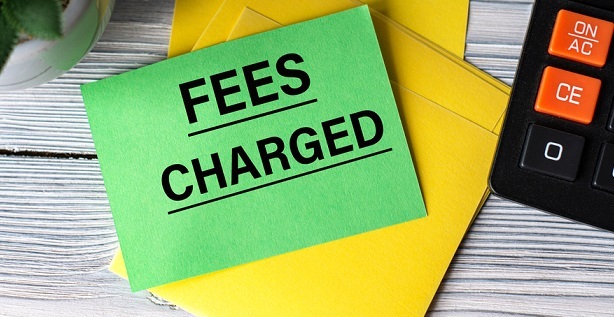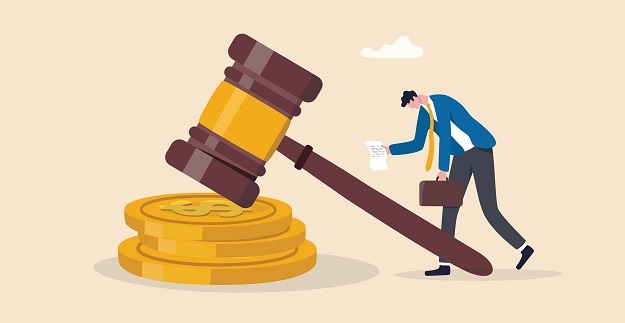
 Data Structure
Data Structure Networking
Networking RDBMS
RDBMS Operating System
Operating System Java
Java MS Excel
MS Excel iOS
iOS HTML
HTML CSS
CSS Android
Android Python
Python C Programming
C Programming C++
C++ C#
C# MongoDB
MongoDB MySQL
MySQL Javascript
Javascript PHP
PHP
- Selected Reading
- UPSC IAS Exams Notes
- Developer's Best Practices
- Questions and Answers
- Effective Resume Writing
- HR Interview Questions
- Computer Glossary
- Who is Who
Overdraft Fees
Introduction
The best way to up your finance game is by keeping track of your account balances frequently. This will help you to understand and compare all your cash flows, giving you the full picture of your financial standings in the current year as opposed to last year. As people have authority of their funds lying in their accounts, they can withdraw anytime.

So, banks came up with minimum balance requirements to encourage people to save right. Besides, these entities endure through a lot of expenses such as overheads, ATM services, customer services, account maintenance charges, and other banking operations. To meet all the aforementioned outlays, the bare minimum is what is expected from the customers.
Sometimes, it's impossible to maintain even a basic limit in one's account, propelling them to ask banks for extended credit, which in other terms is called an overdraft.
Define Overdraft
If a person transacts beyond a certain limit in spite of lack of funds in their account, it's referred to as an overdraft. A bank offers this extended facility to customers to encounter their short-term needs. Overdraft lets the customer withdraw funds even when their account shows zero or nil balance.
Now, this facility is not granted to every customer but to only select ones based on their relationship with the bank or financial institution. And the overdraft limit varies from one borrower to another. The customer can withdraw funds anytime till the overdraft limit.
Understanding Overdraft Fees
Banks levy overdraft fees when one authorizes a payment transaction from an inactive checking account. This charge is employed to customers who spend beyond the checking account limit. Apart from overdraft fees, the financial institution also levies charges for insufficient funds in their account, which can be waived by taking overdraft protection.
If a bank uses their own funds to make the overdraft payments, there won't be any impact on your credit score. But if the same process is linked to the credit card to channel all the overdraft payments or use it for overdraft protection, then this impacts your credit score. When the customer fails to deliver the overdraft payments before or by the prearranged period, their account gets handed to the collection agency, resulting in credit score shifts.
Reasons for Levying Overdraft Fees
If the customer is not aware of their spending, they'll subsequently end up in overdraft and will be incurring overdraft fees for falling short of the bank requirements. There are many reasons banks levy these charges, of which, some are listed below.
Cover up bank expenses Whenever a customer makes any payment or deposit or withdrawal, a bank incurs a lot of costs like maintenance, operations, digitalizing, paper statements, and more. So, to meet these outlays, banks require sound funds, which they can get from one of the sources like overdraft fees.
Expanding bank operations If a person becomes a customer of a certain bank, he or she expects full support and quality services from that financial institution. That can only happen when banks perform at full capacity. Hence, they charge overdraft fees and let customers have full access to all the banking services.

Put off customers from future overdrafts No one likes shelling their funds to make overdraft payments. So, banks levy overdraft fees as a part of their policy to aid customers realize the cost they incur upon spending beyond their balance. This move is to make one aware of their spending and trim the number of overdrafts.
Aid customers meet their financial goals As everyone has some financial goals to meet at some point in their lives, it's pivotal to be a step ahead of their finances. It aids customers to learn about their needs and be cautious with their payments. Overdraft fees let customers understand the significance of financial goals.
Deter from bankruptcy If the customer makes a series of overdraft transactions, there's a high probability that he or she would end up in a pile of debt. This not only puts him or her at high risk, but also would lead to bankruptcy.
Ways to Avoid Overdraft Fees
From a customer's perspective, an overdraft fee is an expense, but otherwise for banks. So, here are some ways you can steer clear of overdraft fees.
Opt out from overdraft facility The easiest route to quit overdraft is by opting out from that facility. From that point onwards and moving forward, whatever financial transactions you make will only be authorized if you have a bank balance. By doing so puts you back in the driver's seat again, keeping you financially safe and sound.
Go for online banking Digitalization took the financial industry to newer heights. Today, everyone can operate their accounts via online banking. This helps people be aware of their balances and be wise with their spending.
Prefer prepaid cards Another way to avoid the overdraft fees is by opting prepaid cards. This lets you spend only to the extent of the card limit. Any transaction made beyond that benchmark will be declined.
Opt for bank alerts Keeping track of every financial update made via our account is a laborious task in hand. If you don't watch your spending, there's a chance that you might end up in an overdraft situation. So, opt for bank alerts, as it keeps you updated about your account round the clock.
Conclusion
Overdraft fees is applied when a customer doesn't have sufficient balance in their account but still proceeds with the transaction. This facility enables the customer to withdraw more than their savings balance. The bank charges some processing fees for using the overdraft facility. Overdraft carries both interest and other charges if the customer does not pay on time. Since overdraft is an expense, you can avoid it in myriad ways such as opting out from the facility, go digital, use prepaid cards, etc.
FAQs
Q1)What are pros and cons of overdraft?
Ans)Overdraft can be processed without facing any issue by opting for overdraft protection.
Some of the pros of overdraft are as follows
Overdraft allows you to utilize more funds than that are available in the account.
One doesn't need to furnish any collateral to avail overdraft services.
The paperwork in overdraft facility is limited compared to other credit options.
The customer has to shell interest only on the utilized funds but not on whole value.
Some of the cons of overdraft are as follows
Not everyone gets the overdraft facility, unless he or she holds an account in the bank they applied for.
The interest rate keeps on fluctuating frequently.
Overdraft facility checks the financial position of the customer or the entity before giving a green signal.

